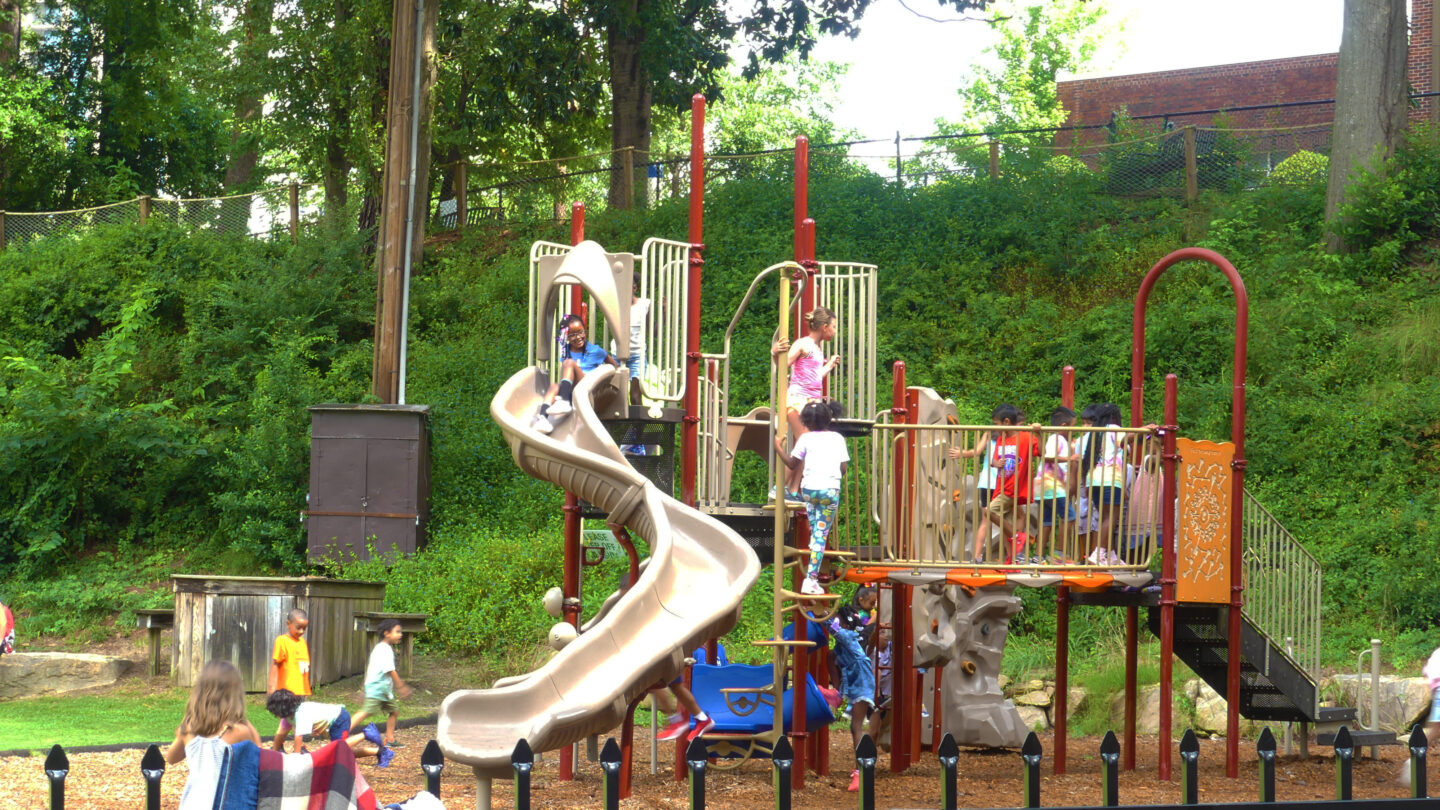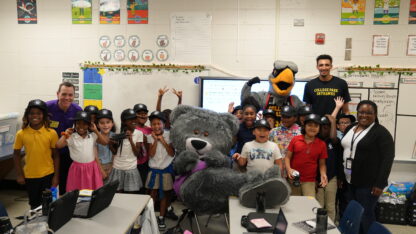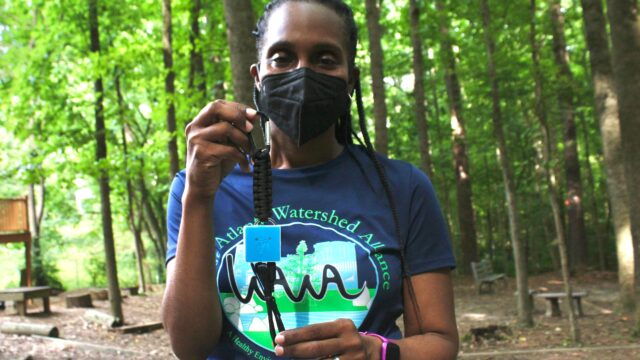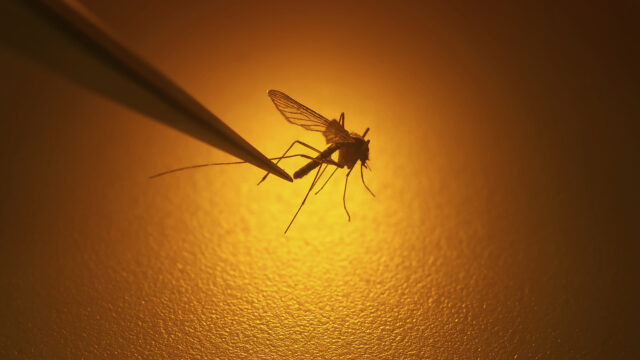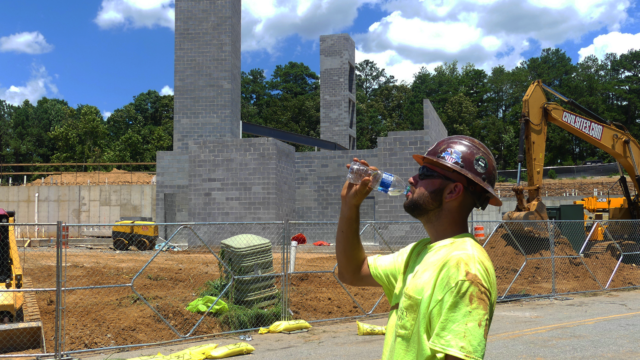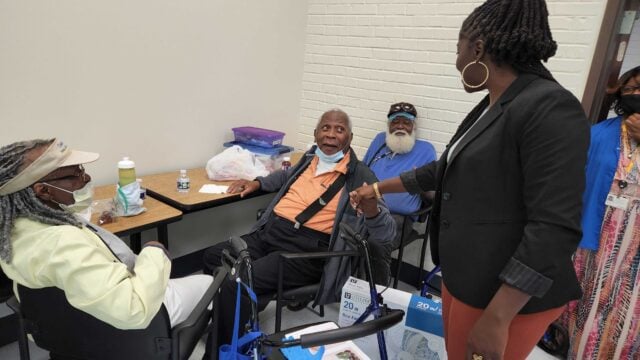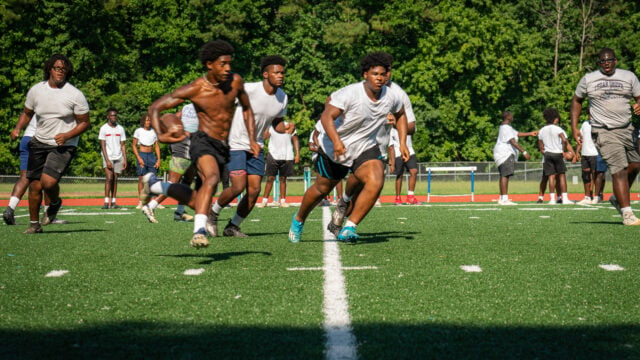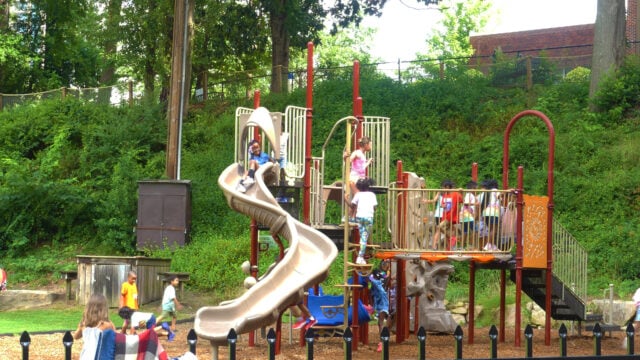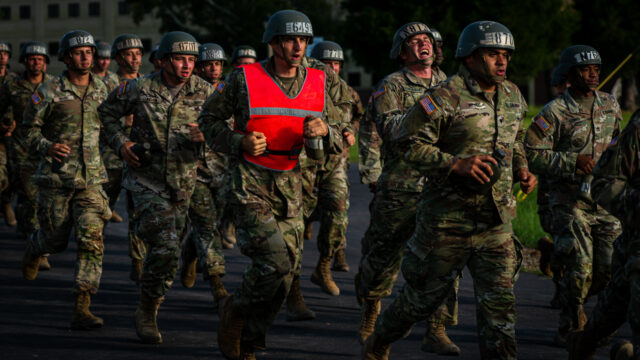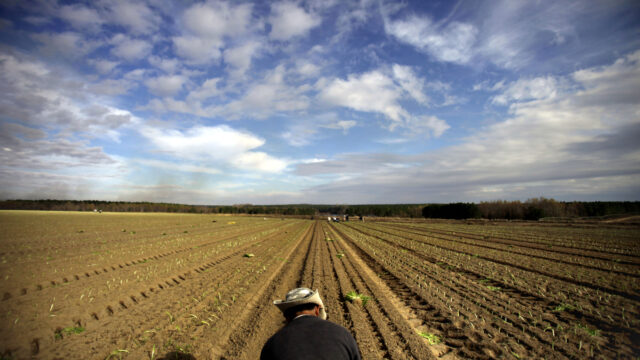For decades, Georgia schools have started classes in August, the state’s second-hottest month of the year after July. The first school day for the Cobb County School District and Atlanta Public Schools was Aug. 1 this year.
Research shows extreme heat can negatively affect student performance.
WABE recently visited Atlanta’s Garden Hills Elementary School to see how students and teachers cope with returning to class in hot weather.
The Recess Requirement
A new state law requires K-8 public schools to give students recess every day. At Garden Hills, kids get 30 minutes a day. Principal Stacey Abbott says for younger students, that’s often broken into two 15-minute sessions. On a recent August morning, Garden Hills Kindergarten and first-grade students enjoyed recess at about 11:30. The temperature was about 75 degrees, which is not too hot for Atlanta in August.
Abbott uses a color-coded chart, called Weather Guidelines for Children, to help her decide if it’s too hot for kids to go out. It uses traffic light colors-red, yellow, and green-to rank temperatures.
“If we hit and close to the red or into the yellow, we put a note right on the front door and to let [teachers] know…reduce your time, go and spend the rest of it on indoor recess,” Abbott says. “By all means, still have recess, still get your outside time.”
A temperature of 75 degrees ranks in the “green” or “safe” area. When temperatures get into the 90s, they are coded as yellow. Really hot days-100 degrees or higher are marked red, which is considered unsafe to play outside.
“We use [the chart] both in the winter and in the summer so that we can kind of keep track of when our kids should be out and when they shouldn’t,” Abbott says.
Keeping Things Running
Garden Hills was built in 1938. So, even though it’s air-conditioned, the system needs to be checked consistently. The school’s onsite manager, Tom Fuller, uses a laser thermometer gun to measure the temperature in every room in the school.
“I shoot the wall, one of the inner walls to see what that temperature is,” he says. “Then I’ll shoot to discharge because the discharge coming out going into the room should be a lot colder than the wall.”
Ideally, the temperature should be 70-72 degrees Fahrenheit, he says. If it’s higher than that, he puts in a work order. Fuller is constantly checking the temperature.
“I do it first thing in the morning before anybody gets here,” he says. “Then during lunchtime, I’ll go check again. I just walk the entire building every room, multiple times a day.”
Fuller is at Garden Hills full-time. APS has onsite managers for all of its schools, but some campuses share.
Turning up the heat
As hot as Atlanta is now, scientists expect it to get even hotter.
“We’re seeing in a lot of areas of Georgia, the hot days are going to increase by 25% over what they are now,” says Paul Chinowsky, a professor emeritus at the University of Colorado Boulder who studies the effects of climate change on schools. He says as temperatures warm, schools like Garden Hills will have to run their air conditioning systems longer.
“We’re not going to be able to turn [air conditioners] off at night because the temperatures aren’t going to come down enough,” he says. “So systems that we anticipated that may have run six, seven hours a day, now we may be running 18 or 20 hours a day, and they’re not designed to do that.”
“All of the climate models are showing that what we’re experiencing right now at the first part of August, this will be the first part of September.”
Paul Chinowsky, professor emeritus, University of Colorado Boulder
Chinowsky says as temperatures are expected to increase, schools are facing three main problems. The first is electrical systems that can’t handle additional air conditioning.
“A lot of people are talking about, ‘Let’s put window units in all the classrooms. That’s an inexpensive fix,’” he says. “Well, it’s not because most classrooms aren’t wired to handle all these air conditioners.”
The second problem, he says, is that there’s not a lot of airflow built into schools to handle the increased cooling requirements. He says schools will need to build things like covered walkways to help with that.
The third problem schools have, Chinowsky says, is that there are a lot of different labs in schools these days. For example, computer labs and media centers have lots of electronics that create heat and those spaces aren’t necessarily being cooled. As temperatures get hotter, Chinowsky says, schools will have to add more shaded areas.
“I think over the next five years, you’re going to see a whole new playground design that’s going to have shade there to prevent kids from getting overheated,” he says.
Chinowsky also says Georgia school districts will probably have to rethink those early start dates.
“It may be convenient for some people, but the truth is, it’s going to be unhealthy,” he says. “All of the climate models are showing that what we’re experiencing right now at the first part of August, this will be the first part of September.”
He says within the next decade, August in Georgia will have a lot of those ‘red’ days, which indicate extreme heat.
Chinowsky also says Georgia school districts will probably have to rethink those early start dates.
“It may be convenient for some people, but the truth is, it’s going to be unhealthy,” he says. “All of the climate models are showing that what we’re experiencing right now at the first part of August, this will be the first part of September.”
He says within the next decade, August in Georgia will have a lot of those ‘red’ days, which indicate extreme heat.
Meanwhile, schools like Garden Hills are trying to help kids stay cool however they can.
For Sebastian, a Kindergartener, it’s all about staying hydrated. “I drink a lot of water,” he says.
Honor, a first grader, has a little more experience. She comes prepared.
“Sometimes I bring my ice pack to school and put it on my head,” she says.
First-grade teacher Maya McKenzie says she tries to make sure her kids transition smoothly from the heat to the air conditioning.
“…making sure [when they’re outside] they’re staying in the shady areas and they’ve got all their water bottles that they bring outside,” she says. “When we go in, we do some cooling meditative breaths, and take a quick head down on the table, chill out before we get started.”
This story is part of WABE’s The Heat Effect series.
